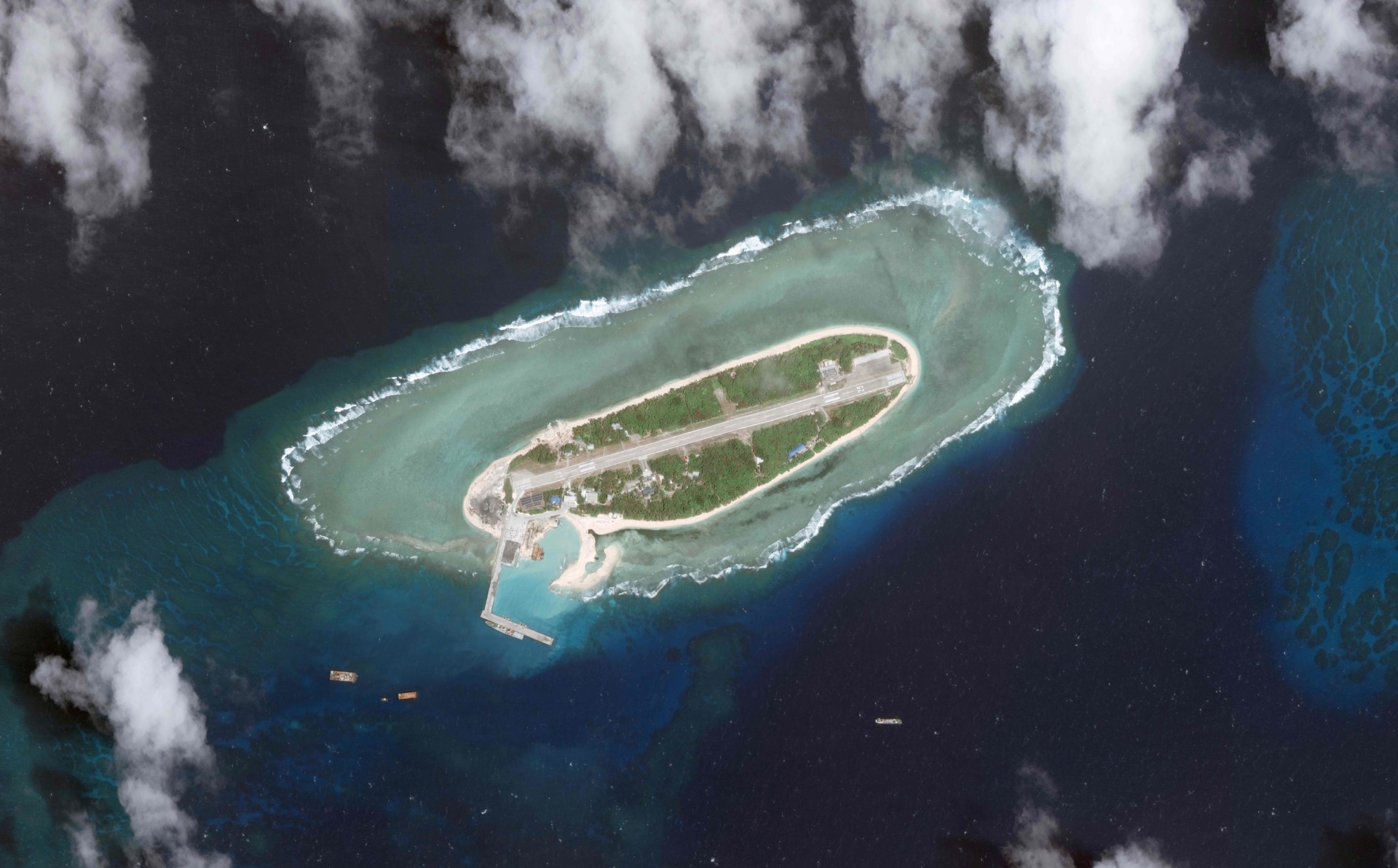On March 1, Representative Joe Courtney introduced a resolution in the U.S. House of Representatives calling upon the U.S. Senate to ratify the 1982 United Nations Convention on the Law of the Sea (UNCLOS). The resolution affirms that it is in the U.S. national interest to become a party to the convention. It recommends the ratification of UNCLOS remain a top administration priority because the treaty has received bipartisan support from every president since 1994, and its importance has been underscored by the strategic challenges the United States faces in the Asia-Pacific region, especially in the South China Sea.
Meanwhile the United States remains bound by the customary international law underpinning UNCLOS, including Article 121 of the treaty regarding the status and entitlements of islands. And along with Australia, the European Union, and others, the United States is urging China to respect the forthcoming ruling by the tribunal established under the rules of UNCLOS to decide Manila’s case against Beijing’s South China Sea claims—a ruling that is expected to be favorable for the Philippines. At a press conference following the U.S.-ASEAN Summit held last month in Sunnylands, California, President Barack Obama said that the parties to UNCLOS are obligated to respect and abide by the ruling.
But that ruling could set a precedent affecting the claims of several of the nations that are calling on China to abide by it. For instance, Australia, Brazil, France, Japan, and the United States all make expansive maritime claims from remote islets that are not dissimilar in size or habitability to some of the Spratly Islands that the Philippines insists are legally rocks, not islands. If the tribunal rules that those features in the South China Sea are indeed rocks and therefore cannot generate a 200-nautical-mile exclusive economic zone (EEZ) or continental shelf in accordance with Article 121 of UNCLOS, all states should face pressure to abide by the precedent set. That means that McDonald Island (Australia), Clipperton Island (France), Saint Peter and Paul Rocks (Brazil), Okinotorishima (Japan), and Howland Island, Baker Island, and Kingman Reef (the United States) should generate only 12-nautical-mile territorial seas, not EEZs or continental shelves as their owners currently claim.
If the tribunal decides that the land features in question in the Spratlys, particularly Itu Aba (Taiping Island), are “rocks” under Article 121(3) of UNCLOS, should the United States take the award into account and bring its own maritime claims into conformity with the ruling? Howland Island, Baker Island, and Kingman Reef in the Pacific Ocean constitute part of the United States Minor Outlying Islands. They contain no fresh water, no agricultural soil, and no permanent population. They measure 0.69 square miles, 0.46 square miles, and 0.004 square miles, respectively. In other words, they are clearly less able than Itu Aba to “sustain human habitation” or “economic life” as required of an island under Article 121(3).
The U.S. government has not made public its position on Article 121(3) and maritime zones generated by uninhabited islands, but its leading decisionmakers on topics related to the law of the sea have consistently asserted that the United States is entitled to claim an EEZ around all its possessions, whether inhabited or not, without regard to size or location.
At the 1986 annual meeting of the Law of the Sea Institute in Miami, Florida, the State Department’s assistant legal adviser for oceans, international environmental, and scientific affairs David Colson said, “The United States had concluded that all islands should have the same capacity to generate EEZs, whether they are inhabited or not, and that isolated or awkwardly located islands should not be viewed as ‘special circumstances’ or geographical anomalies in determining extended maritime boundaries.” He also said, “We decided that any piece of real estate could fit under the definition of an island, and we made the decision based upon what areas had United States territorial seas drawn around them.”
Professor Jon Van Dyke interpreted this U.S. position as meaning “any insular feature that can generate a territorial sea can also generate an EEZ. Under this view, there are no ‘rocks’ that meet the criteria of article 121(3) of being unable to ‘sustain human habitation or economic life of their own.’” The effect of this U.S. position “is to expand the areas of the ocean where the living and nonliving resources can be claimed by one nation to the exclusion of all others, thus reducing the resources that remain to be shared as the ‘common heritage’ for all humankind,” according to Van Dyke.
If this is indeed the official U.S. position, and if the tribunal decides in Manila’s favor regarding the legal status of features in the Spratlys, then in order to respect that precedent the U.S. government will need to consider changing or abandoning its claim to 200 EEZs and continental shelves from its remote Pacific islands. It should be hoped that other states, including Australia and Japan, also take the tribunal’s decisions into account and bring their maritime claims and conduct into conformity with UNCLOS if necessary.
